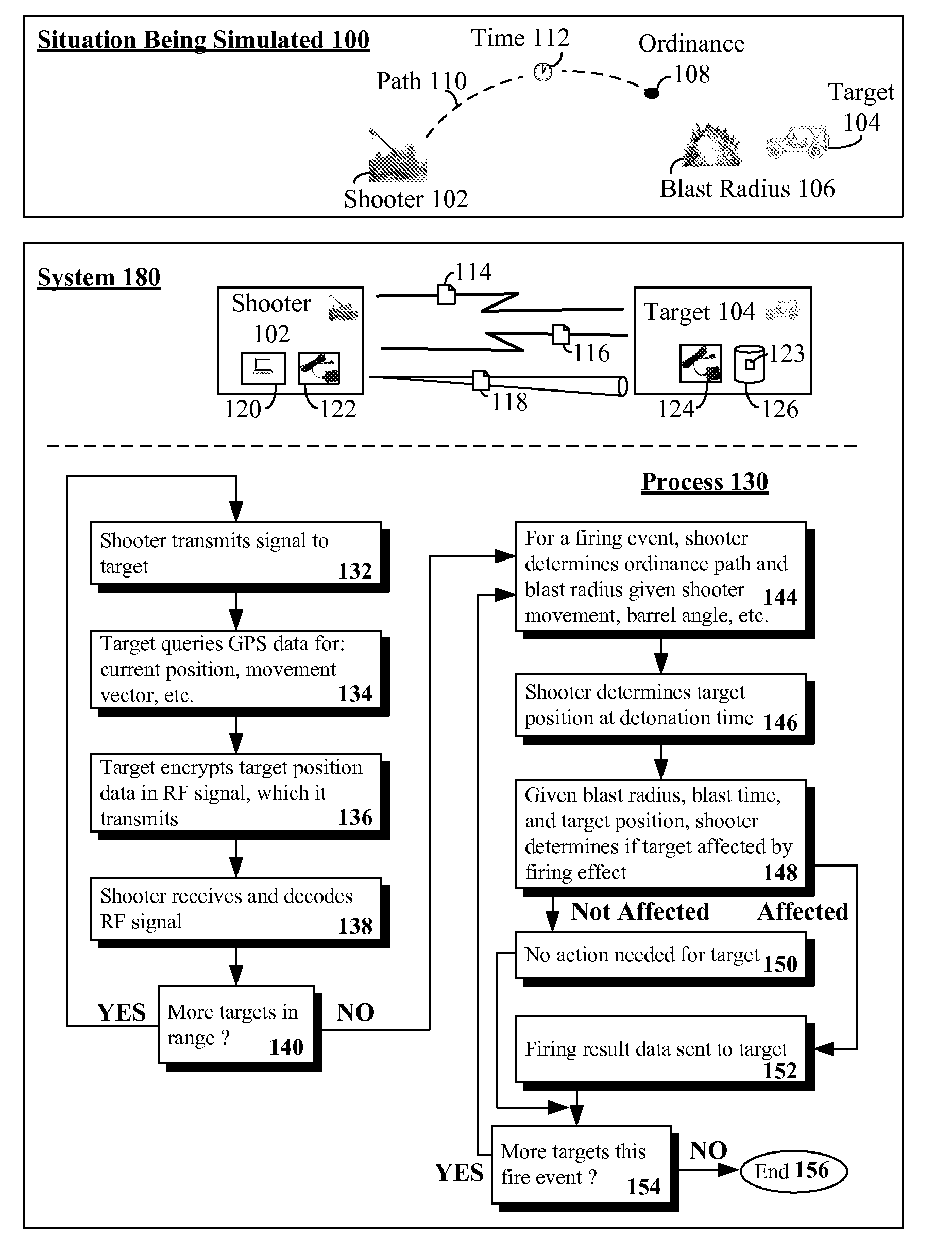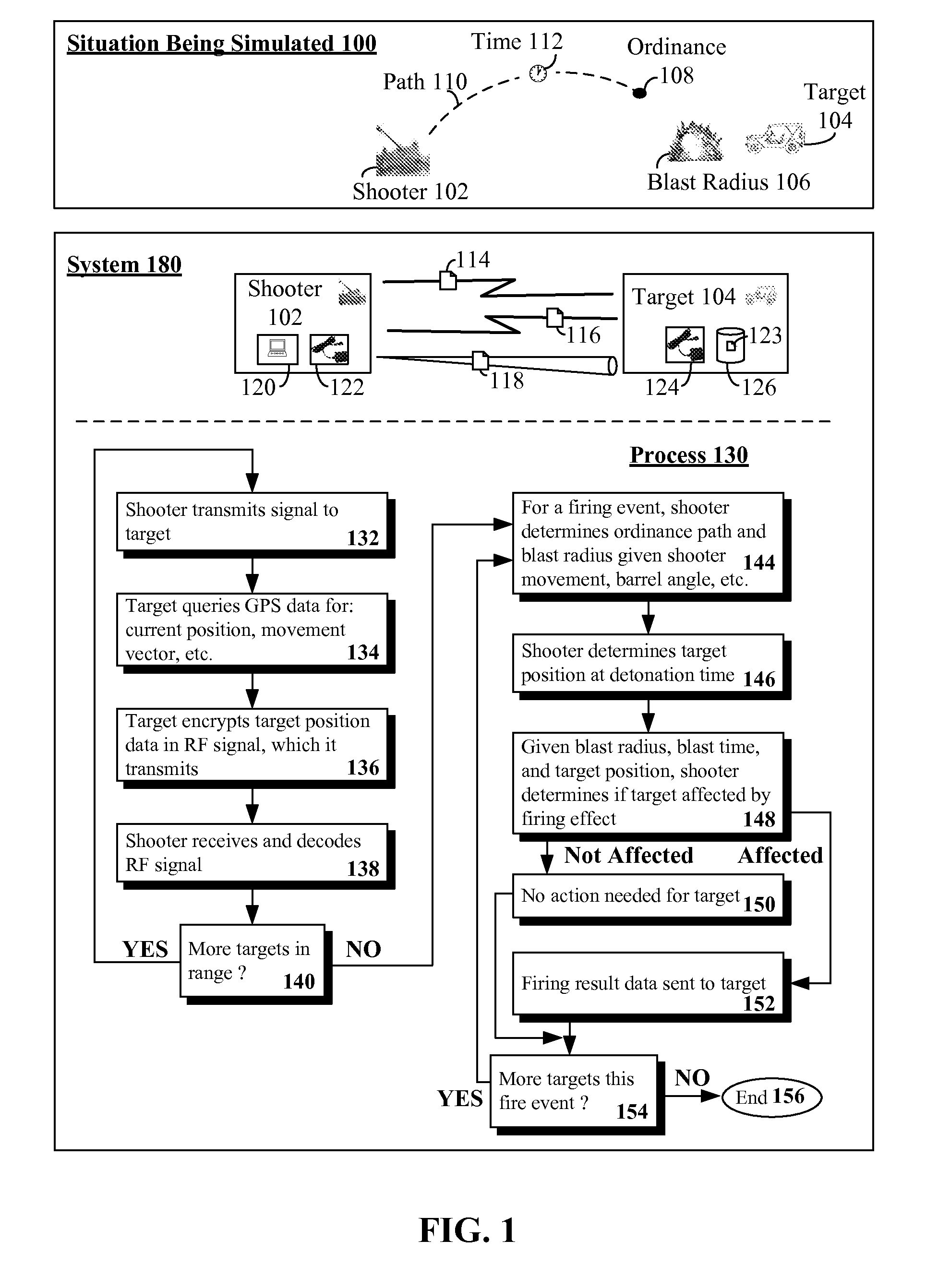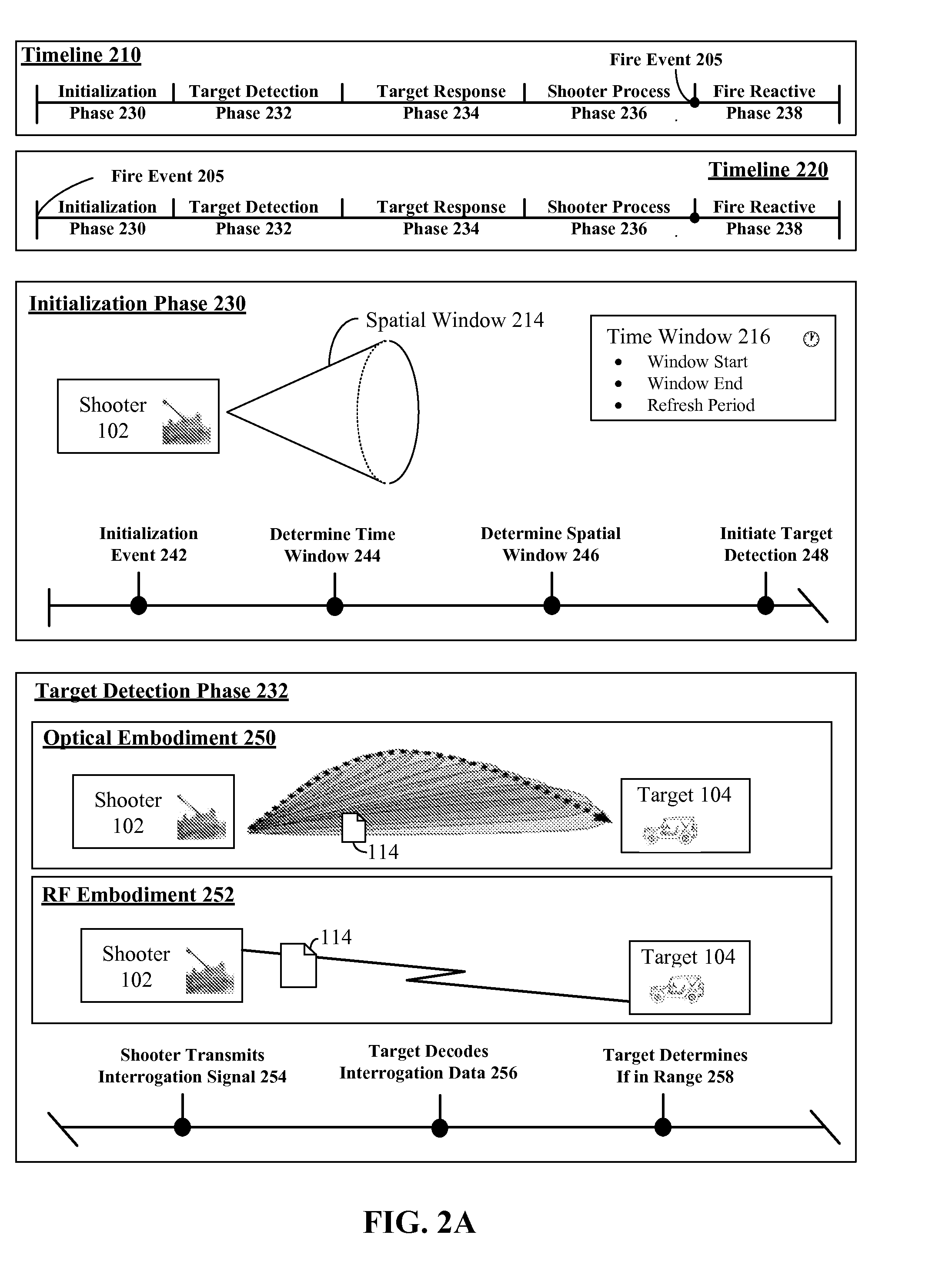Trajectory simulation system utilizing dynamic target feedback that provides target position and movement data
a trajectory simulation and target feedback technology, applied in the field of tactical engagement simulation systems, can solve problems such as line-of-sight delay, flawed approach, and inability to represent a real-world situation
- Summary
- Abstract
- Description
- Claims
- Application Information
AI Technical Summary
Benefits of technology
Problems solved by technology
Method used
Image
Examples
embodiment 250
[0046]In target response phase 234, the target 104 can query recently obtained GPS data 260. For example, a target's GPS component 124 can record a recent history 123 in a memory 126. This GPS data 123 can be optionally processed 262 by the target and encoded 264 in a radio frequency signal, which the target transmits 266. The encoded data 116 can include, for example, a GPS position of the target 104, a velocity vector of the target 104, a vertical scan number (of a sensed optical signal—assuming embodiment 250), and other such data.
[0047]In the shooter process phase 236, the shooter 102 can receive and decode the response 116. The shooter 102 can also query 268 its own GPS component 122. From the shooter's GPS data, shooter 102 movement can be determined. Ordinance path, blast radius, detonation time (given shooter 102 movement) and the like can be determined 270 for a firing event. Further, a target position at detonation time 272 can be determined (from the target's GPS data and...
embodiment 257
[0048]In the fire reactive phase 238, the shooter 102 can convey fire response data 118 to the target 104. In one embodiment 257, the shooter 102 can use a laser to convey a kill command to the target 104. This can require an adjustment 276 in a laser aim point to the target position. The adjustment 276 can be based on shooter 102 calculations that utilize target 104 provided GPS data (from feedback 116). For example, target 104 distance can be determined from the feedback (116) provided data, current target position for laser aim point adjustment can be based on target vehicle vector (movement) calculations, etc.
[0049]In one embodiment, adjustments to the laser aim point 276 can occur in advance of (and / or independent of) a fire event. These laser aim point adjustments can also occur independent of weapon barrel movement.
[0050]In embodiment 259, fire response data 118 can be encoded and conveyed from the shooter 102 to the target 104 over a RF transmission. The response data 118 ca...
PUM
 Login to View More
Login to View More Abstract
Description
Claims
Application Information
 Login to View More
Login to View More - R&D
- Intellectual Property
- Life Sciences
- Materials
- Tech Scout
- Unparalleled Data Quality
- Higher Quality Content
- 60% Fewer Hallucinations
Browse by: Latest US Patents, China's latest patents, Technical Efficacy Thesaurus, Application Domain, Technology Topic, Popular Technical Reports.
© 2025 PatSnap. All rights reserved.Legal|Privacy policy|Modern Slavery Act Transparency Statement|Sitemap|About US| Contact US: help@patsnap.com



